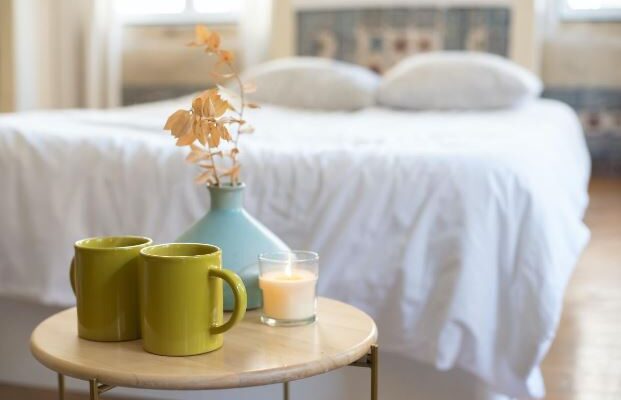Natural room sprays are a simple and convenient way to refresh living spaces with pleasant aromas. They can also have mood-boosting and therapeutic effects.
Unlike traditional air fresheners, herbal sprays use natural essential oils and botanicals to infuse living spaces with soothing fragrances. They also contain no harmful chemicals.
Essential Oils
Essential oils are concentrated, distilled plant extracts that retain the natural smell and flavor of the original plant. There are many primary oil varieties, and their chemical makeup can vary within and between the same plant species. Each essential oil has its own unique scent and therapeutic properties.
Essential oil blends are used in room sprays to freshen the air and provide aromatherapy benefits. These fragrances also work to naturally neutralize odors and purify the air, making them a great alternative to conventional chemical room fresheners.
Adding a few spritzes of essential oils to your home or office can instantly calm the mind and soothe the body, leaving you feeling relaxed, rejuvenated, and ready for a good night’s rest. This formula features ylang-ylang, vanilla, frankincense, and cedarwood essential oils to help ease the stress of everyday life and promote relaxation.
The alcohol in this recipe acts as a natural emulsifier to ensure that the essential oils and water combine well. This helps the oils stick to the water’s surface and disperse throughout the air rather than sitting on top. The alcohol also serves as a preservative to prevent mold and bacteria from growing in the spray. When choosing alcohol, avoid isopropyl or rubbing alcohol, as this can harm the lungs.
Water
Spritzing a soothing room spray is a fast, convenient way to freshen up linens and other fabrics throughout your home. This non-toxic alternative to scented candles is also great for infusing your home office with creativity and inspiration or refreshing baby clothes and bedding.
Water and essential oils are the base ingredients in most homemade room sprays. You can add any number of different aromas to suit your mood and style. Try a blend of citrus and herbs like this citrus and sage room spray or calming lavender and eucalyptus spray. This recipe also includes free printable labels for your bottles designed to look like those on the store-bought room sprays you see.
Another option is to spritz a room spray explicitly made with sleep in mind. This aromatherapy spray uses soothing ingredients like lavender, chamomile, vetiver, and cedarwood to help calm the senses, encourage restful sleep, and promote serenity.
Choosing natural room sprays instead of those with synthetic fragrances is also good for the environment. Many chemicals that create commercially-sprayed scents harm the environment, contributing to air pollution and ground-level ozone. Opting for natural room sprays that use essential oils and other natural botanicals helps to minimize environmental damage.
Alcohol
Soothe the air and refresh linens with a long-lasting, aerosol-free room spray. A calming blend of essential oils, including lavender and sage, helps to promote relaxation.
It also contains natural antiseptic and deodorizing properties, which make it a perfect substitute for harsh chemical store-bought aerosols. It’s a great addition to any home, especially in hard-to-reach areas like the bathroom.
Unlike isopropyl alcohol (rubbing alcohol), grain alcohol is less toxic and won’t stain finishes or fabrics. It emulsifies to combine the water and oil in your homemade aromatherapy spray. It also helps stabilize the ingredients and keep your room spray shelf-stable.
If you want your homemade spray to last longer, baking soda can help absorb odors. Just be sure to shake your homemade aromatherapy spray before each use!
You’ll find various recipes for DIY aromatherapy sprays online, but many recipes use isopropyl alcohol instead of grain alcohol. Isopropyl alcohol is a toxic irritant and can damage finished surfaces such as countertops. Grain alcohol is much safer and is readily available at most grocery stores.
Some scented room sprays may contain potentially harmful chemicals such as benzene1, formaldehyde2, toluene, p-xylene1, and phthalates. Making natural room sprays is an easy and cost-effective way to freshen up any space, whether a kitchen, bathroom, bedroom, or living room. Plus, you can customize the scents based on your mood or preferences!
Fragrance
The fragrance is the final ingredient in room sprays and gives a perfume-like aroma. Just like essential oils, scent can be natural or synthetic. The fragrance industry is self-regulatory and maintains a rigorous system of safety assurance. This includes toxicology testing, exposure assessment, and group health, skin and respiratory testing. This information is available to consumers through the Research Institute for Fragrance Materials (RIFM).
The odor-neutralizing abilities of room sprays help to eliminate unpleasant cooking or pet odors, making them an ideal solution for those with allergies and sensitive sinuses. They can also create a soothing atmosphere in the home, especially during stressful times. Fragrance ingredients such as lavender, chamomile, and vanilla relieve stress and anxiety.
When a fragrance molecule is inhaled, it travels across moist membranes, past sensory receptors, and into the brain’s olfactory lobe. These receptors send messages to the limbic system, translating the smell into an emotional response. This process allows us to associate a scent with memories and emotions.
Add a touch of luxury to your home with this eucalyptus and musk soothe room and linen spray. This recipe features an herbal and woodsy scent that will envelop your space in relaxation. It’s also paired with free, printable labels that you can use to decorate your bottles.













